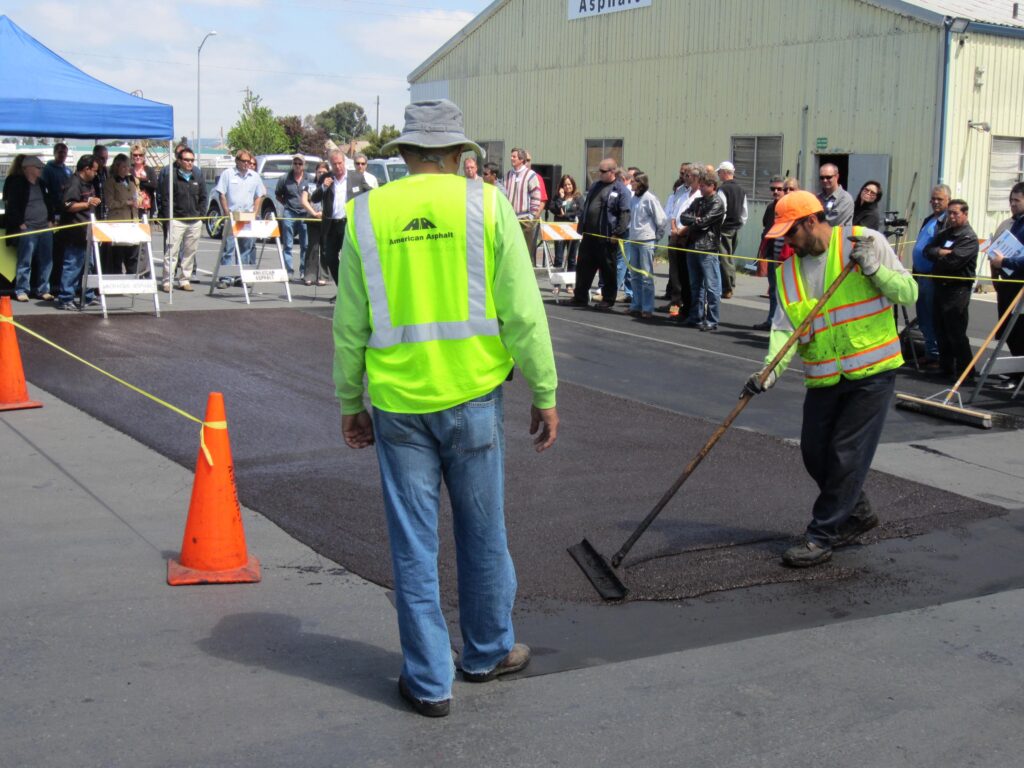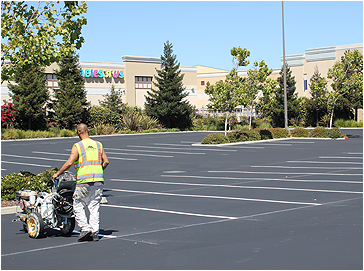
Our customers frequently share frustrations about how quickly their asphalt repair list appears to grow. It often seems like problems compound – and without timely asphalt maintenance, they will certainly spread. Understanding what causes asphalt to crack and crumble can help you control wear and tear, extend your pavement’s lifespan, and reduce repair costs.
Cracking Up – What Causes Asphalt Fissures?
As your parking lot probably showcases, cracks come in many shapes, sizes, and depths. Our crack and sealing repair pros handle them all. Some common types include:
Fatigue cracks
Fatigue cracks, also known as alligator cracks because of their appearance, are typically load-related. Improper construction for intended use, weak sublayers, insufficient pavement thickness, and poor drainage can play a role in these cracks.
Block cracks
Large, rectangular cracks about a foot or more in size over a large area are usually the result of asphalt contraction and expansion from changing temperatures, poor choice of binder in the mix, or dry, aging asphalt.
Transverse or longitudinal cracking
Transverse cracks (perpendicular to the centerline) and longitudinal cracks (parallel to the centerline) are not load-related. These cracks have many possible causes, including the reflection of an existing crack, shrinkage of pavement sublayers, poor construction, or improper paver operation.
Slippage cracks
These crescent-shaped cracks form because of turning/braking vehicles. Common causes include sub-par mixtures or poor adhesion between pavement layers due to improper installation or contaminants between layers.
Edge cracks
Edge cracks are longitudinal fissures near the outer edge of pavement that result from a lack of support at the perimeter.
Lost in the Abyss – What Causes Asphalt Disintegration?
If you’re wondering where the missing pavement from potholes and depressions in your parking lot went, you’re not alone. Disintegration is another common type of asphalt damage. Pavement pieces that disappear with traffic and time can quickly lead to:
Potholes
Pothole repairs are the most common service our asphalt contractors perform. Large holes usually result from the continued progression of other asphalt damage, including raveling, cracks, failed patches – and other nearby potholes. Standing water, weak spots in pavement sublayers from sloppy construction, and poor-quality asphalt mixtures accelerate pothole growth.
Depressions
Also known in the industry as “birdbaths,” pavement depressions with a slightly lower elevation than surrounding asphalt offer a prime spot to collect water. Insufficient compaction during installation is often the cause.
Raveling
The gradual disintegration of asphalt from the surface down is typically the result of poor-quality mixtures or old, hardened asphalt. It often starts with tiny particles that leave the surface looking dry, growing to larger pieces and rough, jagged pockmarks as erosion continues.
Don’t wait to find out what’s causing your asphalt to crack and disintegrate. Address asphalt repairs quickly and effectively with help from American Asphalt. Contact us at 510-723-0280 to schedule a pavement evaluation for your Bay Area, San Jose, Vacaville, Pleasanton, or Oakland commercial property today.
Related Blog Posts
